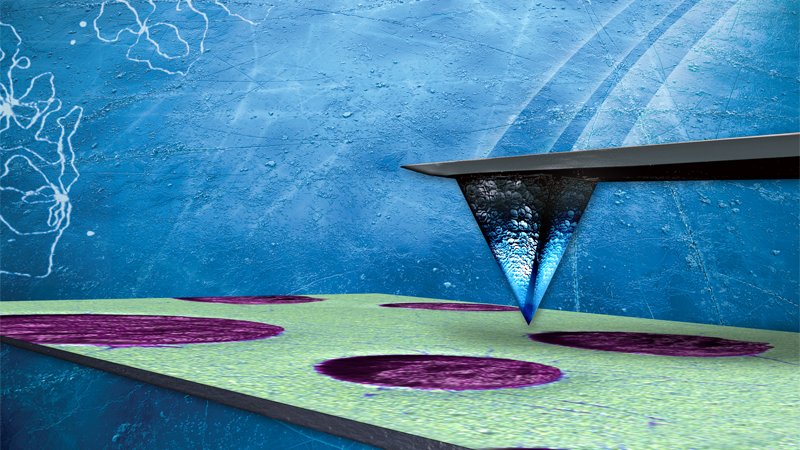Nanolithography
Create nanoscale structures with precision and control
Some of the most progressive studies in nanotechnology require the precise fabrication and interconnection of nanometer-scale structures. Anodic oxidation nanolithography uses an applied voltage to the AFM probe to create an oxide layer directly under the tip. Since the oxide only forms under the tip, very narrow oxide lines can be written on the sample.
Bruker’s NanoMan and NanoPlot software packages provide a user-friendly interface for high-definition nanolithography with a variety of "writing" techniques, in either a graphical point-and-click mode, or in a recipe-driven mode. Lithography is also possible on the Dimension Icon® system using Piezoresponse Force Microscopy (PFM).
Anodic oxidation on Si using SCM-PIT tip to create a nanolithography pumpkin. 5μm scan size showing Height data with shadowing.


